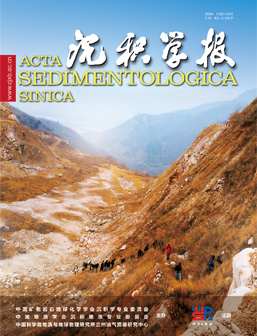Diagenesis and high-quality reservoir development model of Xu3 Member tight sandstone in Western Sichuan Depression, Sichuan Basin
doi: 10.14027/j.issn.1000-0550.2024.113
- Received Date: 2024-09-09
- Available Online: 2025-03-04
-
Key words:
- Key words: tight sandstone /
- diagenesis /
- reservoir development model /
- Xu3 Member /
- Western Sichuan Depression
Abstract: Abstract: [Objective] In order to define the high-quality reservoir development model of Xu3 Member in the source rock stratum, which is the tight sandstone gas exploration in the Xu3 Member of Xujiahe Formation in Western Sichuan Depression to provide theoretical guidance.[Methods] The data of core, thin section, scanning electron microscope, fluid inclusion, situ stable carbon and oxygen isotopes, porosity and permeability are integrated, and based on the basic characteristics of Xu3 Member tight sandstone reservoirs in Western Sichuan Depression and the types of diagenesis, the heterogeneity of the reservoirs and the development model of high-quality reservoirs are further analyzed systematically. [Results and Discussions] It was found that mainly lithic quartz sandstone and litharenite sandstone were developed in Xu3 Member, and the reservoir space was mainly composed of intragranular dissolution pore and fracture, with porosity <7% and permeability <1mD. So the sandstone reservoirs could be divided into types of intragranular dissolution pore and fracture- intragranular dissolution pore. The diagenesis of the Xu3 Member sandstones included compaction, cementation and dissolution, and experienced early humic acid, middle organic acid and late hydrothermal fluids during the evolution process. In addition, two types of vertical sedimentary cycle of sandstone with sandstone and sandstone with mudstone had been identified in the Xu3 Member. [Conclusions] The results indicated that the tight sandstone was altered by the early humic acid and middle organic acid continuously via the intergranular pore throat and fracture and in favour of reservoir formation. However, the late hydrothermal fluid just acted in the late large scale fracture and had insignificant effect on the reservoir quality. In addition, the high-quality reservoir of the sandstone with sandstone vertical sedimentary cycle mainly develops in the lower part of the cycle which characterized by relatively coarse-grain, but the high-quality reservoir of the sandstone with mudstone vertical sedimentary cycle mainly develops in the lower part of the cycle with relatively coarse-grain, and the upper part of the cycle which adjacent to the mudstone.
| Citation: | Diagenesis and high-quality reservoir development model of Xu3 Member tight sandstone in Western Sichuan Depression, Sichuan Basin[J]. Acta Sedimentologica Sinica. doi: 10.14027/j.issn.1000-0550.2024.113 |






 DownLoad:
DownLoad: